









|
 |
| While skiing is a great way to stay in shape in and of itself, it's also a very taxing sport. Because of this, you need to keep yourself in good physical shape. Using these top ski fitness exercises three times a week, every week, you can make sure that you are ready for whatever the slopes throw your way! |
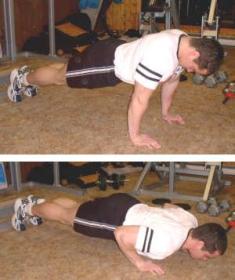  |
Pushups
The tried and true method of building upper body endurance, the push up is the best way to get your arms and chest in shape for the slopes.Build up your strength by starting with three sets of ten repetitions, and increase the repetitions as your push ups get easier.Upper body strength is important for handling the poles and navigating your body through the trails, so push ups are crucial to your ski fitness routine. If you find a full pushup is too taxing, try starting with knee pushups instead. |
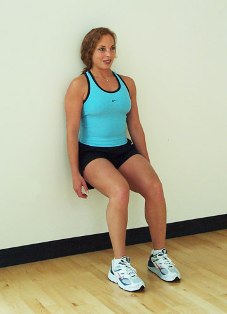 |
The Wall Slide
The wall slide is a quick and efficient way to boost your lower body strength and endurance.The wall slide will build up your entire lower body, including your legs, butt, knees, and abdominals, all important to keep yourself injury free while skiing.To perform a wall slide, place your back flat against the wall with your feet directly in front of you. Slide your body down into a sitting position as far as you can go, then bring your body back up. The more strength you build in your lower body, the lower you will be able to drop during this exercise. |
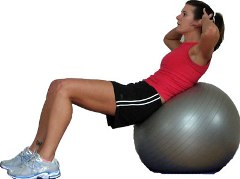 |
The Ball Crunch
The ball crunch is the most effective way to improve your core strength and build up your skiing endurance.Regular crunches do well, but ball crunches put less unnecessary strain on your body, and focus more on your center and abdominals, making it easier to do with better results.For ball crunches, lie facing the ceiling with the ball under your mid-back. Place your arms behind your head, and contract your abs the same way you would with a regular crunch. As you curl, keep the ball in a stable position, then lower your back down again. |
 |
The Lunge
Lunges are a pivotal exercise in any training routine, and your ski fitness routine is no exception. Lunges can build quadriceps, glutes, and the hamstrings with little strain on the rest of the body.These muscles are important for keeping your body steady while skiing. For lunges, stand on a flat surface with your feet shoulder width apart. Take a step forward, and lay your foot flat on the ground. Your knee should be at a perfect 90 degree angle and line up with the front of your toes. Bring yourself back up, and switch legs. |
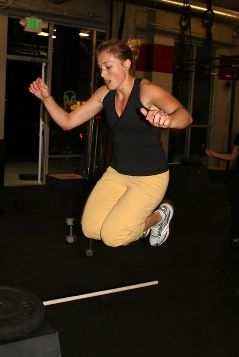 |
Ski Jumps
Since skiing involves a significant degree of impact on the knees as well as frequent side to side motion, ski jumps is one of the best ski exercises you can do. To do these you start with your feet together, then bend your knees and jump to one side. From there immediately jump to the other side. Continue repeating this lateral back and forth movement, always being sure to keep your knees soft at impact. You may decide to jump with your feet either close together or in a wide stance, however always take off and land with both feet. You might put a piece of tape on the floor to help focus your movements.keep tucked low throughout. keep your feet shoulder width apart avoid turning around in circles. With each jump, aim to take off immediately upon landing, with minimal uplift, focus on staying in a tucked skiing position.Look at increasing the amount of time you perform this ski exercise for, aim for a minimum of 20 - 30 seconds with a similiar amount of rest time before you repeat. As you become fitter, increase the length of time to 30 - 60 seconds maximum, before you rest and stretch your legs.Repeat as often as you can, making sure you have adequate rest between each exercise session.
|
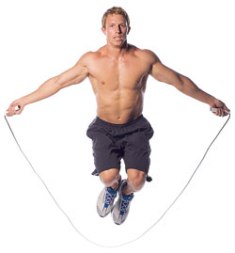 |
Plyometrics
When it comes to ski exercises, plyometric exercises are perfect. Essentially these are exercises which require you to jump. Use caution when you do these, as you can injure yourself if you are out of shape or have a history of knee problems.Jumping rope and jump squats are two good plyometric ski exercises. To create some variation, you can also extend a rope a few inches off the ground and jump back and forth over it. As you get stronger you can increase the height of the rope. This type of exercise will condition your legs for skiing by improving how your muscles respond to the demands of skiing. |
|
|